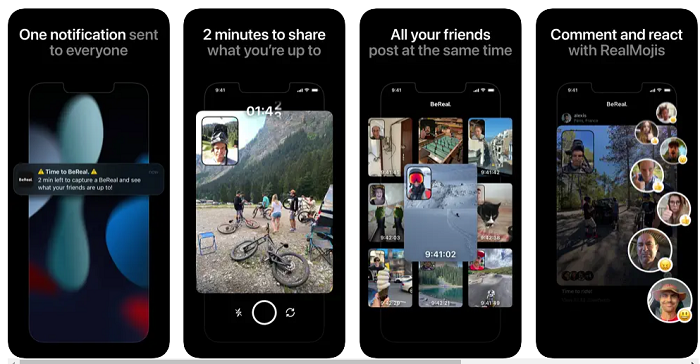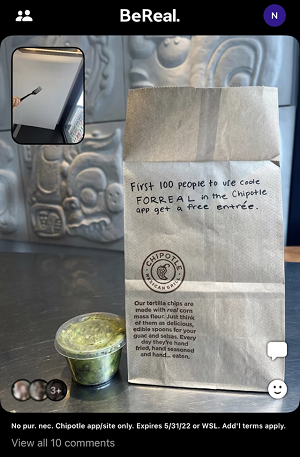Have you got into rising social app BeReal as yet?
If so, you’re not alone, with the app now reportedly up to 10 million daily active users, rising from just 10,000 a little over a year ago.
The trending app of the moment, BeReal sends out a prompt to all users at a random time each day, which asks people to share a photo of what they’re doing, right there and then, with a 2-minute time limit to post an update.

The app is being touted as the anti-Instagram, with the focus on real, unedited everyday life, as opposed to airbrushed, polished IG lifestyle scenes.
As described by BeReal:
“No filters. No followers. Just friends, sharing with each other. On BeReal, you discover your friends’ real lives and get closer to them.”
That approach is clearly resonating, so much so that other apps are now looking to replicate its core tools, with Instagram currently working on a new ‘Candid’ feature which looks very similar to the BeReal UI.
It’s interesting to note the growth of the app, and the popularity of its ‘real life’ approach, which shows that people may well have had enough of unrealistic depictions of people’s chosen persona and image online.
Which is a key point of note – when you’re looking at people’s social media accounts, you’re essentially viewing a highlight reel of their life, which excludes the lows and negatives, and accentuates what that person wants you to see. That can lead to negative self-evaluation, and subsequent mental health impacts. But with the most popular celebrities sharing overly airbrushed, hyper-real images of themselves online, that then leads to new trends in representation, and showcasing your ideal image.
You can see, then, why BeReal is gaining traction, with these immediate, everyday images providing a more relatable representation of real life, which can actually help to build community and connection, as opposed to followings online.
But are there brand and marketing opportunities in the app?
Some brands are experimenting with BeReal, like Chipotle, which has been using the app to share exclusive promotional codes.

As explained by Fast Company:
“When Chipotle joined BeReal in April (one of the first major brands to do so), it shared reusable promo codes in its posts for a week. The first 100 people to use the promo would receive a free entree. Those codes were regularly redeemed in less than a minute.”
That, of course, could be novelty value, but it’s an interesting use of the format to entice engagement, which could point to possible marketing approaches via creative use cases.
Maybe, users will be open to such, if they don’t intrude too much on the user experience, and it could be a good way to enhance connection and community.
Other brands are using the app to provide behind-the-scenes content, and insights into how they go about their business, while some are also testing out variable approaches to product previews and offers, based on BeReal’s limited time window approach.
There are no doubt creative considerations here – and at 10 million users, and growing, you can bet that more brands are paying attention, and are considering what they might be able to do to lean into this steadily growing shift.
It’s worth noting that BeReal doesn’t allow formal advertising at this stage, but that could also be on the cards in future, as the app continues to scale and looks to build a more sustainable business model.
But then again, a larger concern is that BeReal’s core appeal is very limited, and that it could easily be replicated by other apps.
Again, Instagram is already doing this, and you can expect other apps to follow suit, as they work to dilute competitor differentiation, and stop their users from downloading another app.
That approach, whether you like it or not, has proven effective, and as BeReal becomes more of a competitor for attention, more apps are going to try and use their scale to blunt the platform before it gets too big.
It remains to be seen whether BeReal can become a truly significant competitor in the space, but 10 million users is significant, and it’s worth, at the least, considering how it might fit into a more creative marketing approach, as an experiment moving forward.



